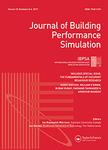版权所有:内蒙古大学图书馆 技术提供:维普资讯• 智图
内蒙古自治区呼和浩特市赛罕区大学西街235号 邮编: 010021

作者机构:Lawrence Berkeley National Laboratory BerkeleyCA94720 United States
出 版 物:《Journal of Building Performance Simulation》 (J. Build. Perform. Simul.)
年 卷 期:2024年第17卷第3期
页 面:383-393页
核心收录:
学科分类:08[工学] 0813[工学-建筑学] 0814[工学-土木工程]
基 金:This research was supported by the Assistant Secretary for Energy Efficiency and Renewable Energy Office of Building Technologies of the U.S. Department of Energy [contract number DE-AC02-05CH11231]
主 题:Decarbonized energy systems optimization modelling complexity risk building energy model
摘 要:As urban energy systems become decarbonized and digitalized, buildings are increasingly interconnected with one another and with the industrial and transportation sector. Transformation strategies to cost-effectively integrate distributed energy sources, and to increase load flexibility and efficiency, generally increase complexity. This complexity causes challenges that the industry is unprepared to deal with. Today s simulation programs, and the processes in which they are used, have not been developed to meet the challenges of decarbonization. Nor have they been designed for, or do they keep pace with, the energy system digitalization. Modeling, simulation and optimization tools, and the processes in which they are used, need to undergo an innovation jump. We show a path to more holistic tools and workflows that address the new requirements brought forward by the increased complexity. Without concerted actions, the building simulation community will fall short of supporting the 2050 decarbonization targets declared by many governments. ©, This work was authored as part of the Contributor s official duties as an Employee of the United States Government and is therefore a work of the United States Government. In accordance with 17 U.S.C. 105, no copyright protection is available for such works under U.S. Law.